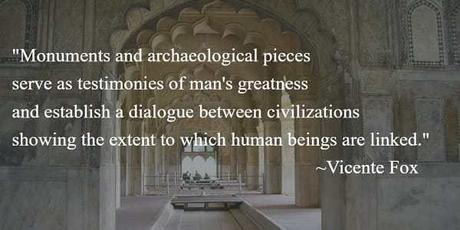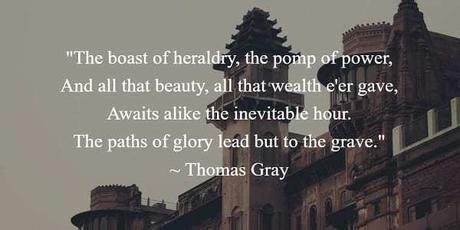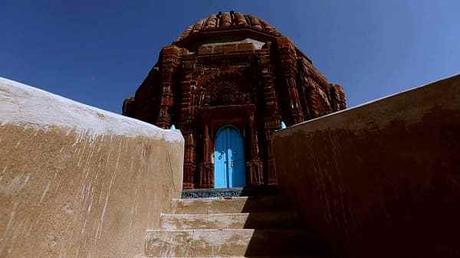

Monuments are where we can feel the soul of history. Maybe that's why most monuments have a sense of gloom pervading them. Because they represent the might of humans that was remarkable enough to etch a wrinkle on history's face. But this might is past now and gone forever beyond our reach. And we can only see their shadows and measure our limits to the infinity of those who have become immortal.
There are many monuments all over the world that have become tourist attractions. Merry speech and laughter still echoes within their ancient walls. But there are numerous others that have been left alone. Structures that might once have been the symbol of a king's pride now lie crumbling and awaiting their final disappearance into the sands of time. It is these monuments where, I think, you can feel the soul of history most poignantly. It is these crumbling, lonely ruins that make you realize that no matter what wealth, power and grandeur you accumulate, they are all going to perish away sooner or later.


I remember going through the Cellular Prison of Port Blair some years ago. The infamous 'Kalapani Jail.' The cells were vacant. There was no braveheart going crazy within those confining walls. The instruments of torture lay still. No screams and shrieks pierced through those walls. There was no dead body of a freedom fighter rotting under the execution room. And yet, I had goosebumps and was near tears while I walked through that monument of bravery, sacrifice, torture and tyranny. Such is the power monuments can exert if they are not disturbed by present day clamor.
But why am I in such a monumental depressive mood, you might wonder. Well, I watched Ekaant today and I guess I'm still in the mood that it set. Yeah, although my exasperation with Indian daily soaps has been made clear in my recent post ' What Indian Soap Operas Teach Us,' there are some shows that I enjoy watching very much. Ekaant, that is aired on Epic Channel, is one of them.
If you haven't checked out Epic Channel yet, then I suggest you do (No, this post is not being sponsored by Epic or Ekaant). The Epic channel is all about Indian history. It feels like a cross between National Geographic and History channel. It has some entertainment shows too like the Time Machine and Dariba Diaries. But it is the shows that highlight the grandeur and mysteries of India that are channel's highlights.


Image from http://www.epicchannel.com/
One such show is Ekaant. The show takes us through Indian monuments that have been forgotten and now lie crumbling into ruins. These include grand forts that can still mesmerize with their structural genius, or havelis that can leave you awestruck with their beautiful artworks, or palaces that still echo with tales of princely romances. But they are vacant now. And alone. Only the soul of history breathes through them now.
Ekaant takes us through such monuments and narrates their story. The show is anchored by Akul Tripathi. And he does a fabulous job in bringing out the grandeur and the sorrow of these lonely old buildings. His narration is natural and sincere and full of feeling. It is complemented by brilliant camera work that beautifully captures the lonely vistas.
I have always enjoyed travel shows. There is so much to see in the world. So many lovely places, people and traditions. We can't see them all. But it is still a pleasure to catch a glimpse of them through the travel shows. But I never knew that one day, I'd be watching a travel show about lonely, ruined places. Monuments for me had always been boring ruins that were just too vast and needed too much walking to see them. For the first time, I'm seeing them as places where history whispers mysterious forgotten or half-forgotten tales. And those tales are fascinating.

